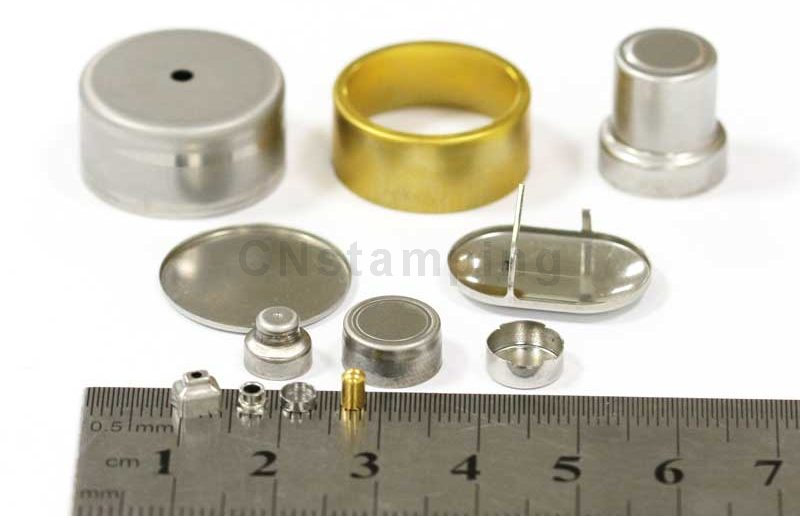Deep Draw Stamping: The Ultimate FAQ Guide
What is Deep Draw Stamping?
Deep Draw Metal Stamping is a processing method for making open hollow parts from flat material or hollow process parts by using a deep drawing die under the pressure of press. Cylindrical deep drawn aluminum cans are typical deep drawing applications.

What are the Types of Deep Drawing Processing?
Generally speaking, a deep draw metal stamping manufacturers will divide the deep drawing process into four parts: Drawing Processing, Redrawing Processing, Reverse Drawing Processing and thinning & Drawing processing.
Drawing Processing: Using the plate device and the stamping force of punch, part or all of the flat plate is pulled into the cavity of the concave mold to form a container with a bottom.
Redrawing Processing: It is necessary to re-draw the formed products after drawing processing to increase the depth of the forming container.
Reverse Drawing Processing: Reverse drawing of the drawn workpiece in the previous process, then the inner part of the workpiece becomes the outer part, and the outer diameter becomes smaller.
Thinning and Drawing Processing: Use a punch to squeeze the formed the container into the concave model cavity slightly smaller than the outer diameter of the container, so that the outer diameter of the container with the bottom becomes smaller.
What are the Deep Drawing Process?
The process of deep draw stamping can be divided into below three stages:
1) Local deformation stage
2) Main deformation stage
3) Pushing stage
What are the Main Factors that Affect the Deep Drawing Coefficient?
The main factors may be included as following:
1) Mechanical properties of materials;
2) Relative thickness of material;
3) Times of deep drawing;
4) Deep drawing method;
5) Radius of convex and concave die fillet;
6) The smoothness of the drawing surface, the lubrication condition, the drawing speed such as the clearance;
What Materials are Used in Deep Drawing Parts?
The raw materials of the deep drawn parts are different and their drawing characteristics are also different. It has an impact on the elongation rate of the product, as well as the ratio of the diameter of the blank to the diameter of the stamping die.
Common Materials for Drawing Parts as Below:
1) Low Carbon Steel: It has the characteristics of good formability, high strength, light weight and cost-effective, Including stable forming dimensions and low corrosion resistance.
2) Stainless Steel: It has the characteristics of high strength, light weight, high corrosion resistance.
3) Aluminum Alloy: It has the characteristics of light weight (almost 1/3 of low carbon steel), high strength, non-magnetic and non-rusting.
4) Copper Alloy: It has the characteristics of corrosion resistant and easy to weld.
5) Titanium: It has the characteristics of high strength, high thermal strength and good corrosion resistance. Furthermore, low temperature resistance, non-magnetic and non-toxic are also included.
What Factors Affecting the Quality of Deep Draw Sheet Metal Parts?
There are many factors affecting the quality of deep drawn sheet metal components. Such as the shape of part and size does not meet the requirements, parts have cracks and wrinkles and obvious contour changes. In addition, wrinkling and cracking are the main obstacles to the smooth process of deep drawing.
Commonly Used Drawn Metal Parts
For a deep drawing manufacturers, they usually manufacturing a variety of deep drawn box, deep drawn enclosures and others by deep drawn stampings. For example, We use them in a variety of industries, including:
1) Battery case
2) Button batteries
3) Pacemaker shell
4) Connector shield
5) Sensor housing
6) Power battery explosion-proof valve
7) TWS earphone case
8) Hearing AIDS
Do You Want to Discuss the Draw Stamping Process or Your Project?
Heju Stamping’ specialists has rich experiences in micro&miniature deep draw stamping project solutions in China. So, If you want to know if deep draw stamping is suitable for your next project, please contact us immediately.
